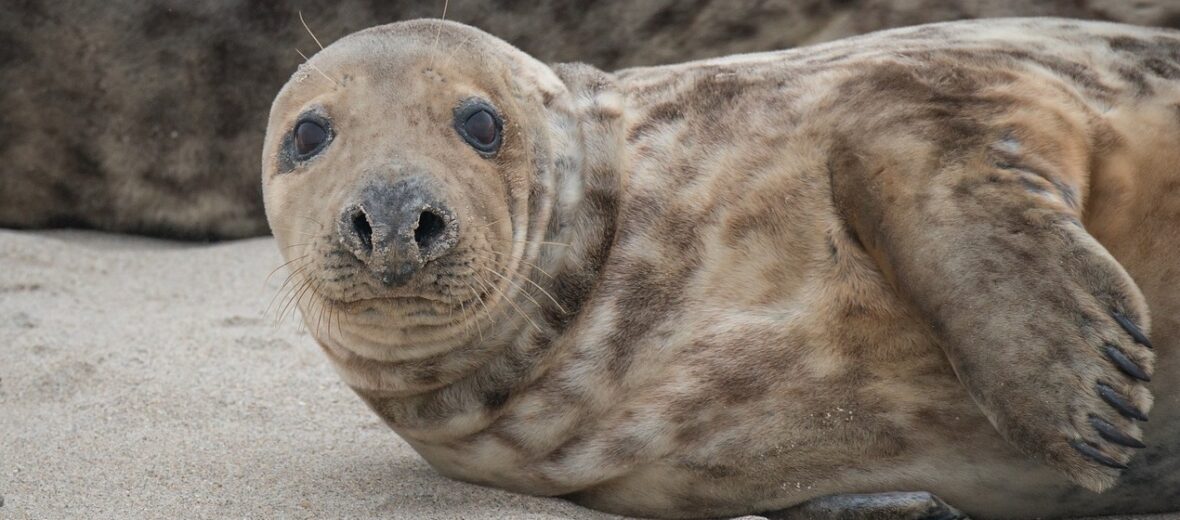
The grey seal is a pinniped that belongs to the family of true, or earless, seals. There are 2 subspecies of grey seal found in the North Atlantic: Halichoerus grypus grypus and Halichoerus grypus atlantica. They are also known as the Atlantic seal and the horsehead seal. Even though they were once sought after by hunters, for their meat, fur, and oil, and almost driven to extinction, their numbers remain strong. There are an estimated 316,000 grey seals in the wild to date. The IUCN lists them as Least Concern and their numbers are increasing.
First the Stats…
Scientific name: Halichoerus grypus
Weight: Up to 880 lbs.
Length: Up to 8.10 feet
Lifespan: Up to 35 years
Now on to the Facts!
1.) Their scientific name translates to “hooked-nose sea pig”. How rude.
2.) Grey seals prey on fish, sand eels, crustaceans, squid, and octopus. They have also been documented preying on harbor seals and harbor porpoises.
3.) Eating up to 11 lbs. of food in a day is easy for these seals.
4.) They are primarily preyed on by great white sharks and orcas. Sometimes Greenland sharks will prey on them. White-tailed eagles will sometimes take pups.
5.) Approximately half of the global population of grey seals are found on and around the British coast.
But wait, there’s more on the grey seal!
6.) These seals often share their habitat with harbor seals.
7.) Grey seals gather in large colonies during Autumn and Winter to mate and breed.
Did you know…?
A grey seal can dive up to 1,560 feet to find food. They can also hold their breath for up to 16+ minutes!
8.) Males fight for breeding rights for harems of females.
9.) Female gestation (pregnancy) lasts up to 11 months and yields a single pup.
10.) Pups nurse for up to 3 weeks. Then mom leaves her pup to fend for itself.
But wait, there’s still more on the grey seal!
11.) Only 30% – 50% of pups reach adulthood.
12.) Even though their large eyes allow them to see well in the murky water, they also rely on their keen sense of hearing. Even a blind seal can still hunt well.
Did you know…?
Grey seals are the largest land breeding mammal in the United Kingdom.
13.) Though not as impressive as penguins, these seals can spend up to 2 days out at sea looking for food.
14.) These seals will sometimes clap their front flippers together to communicate. They can actually get pretty loud, even under water.
Now a Short Grey Seal Video!
Also, check out the Critter Science YouTube channel. Videos added frequently!
Want to suggest a critter for me to write about? Let me know here.



